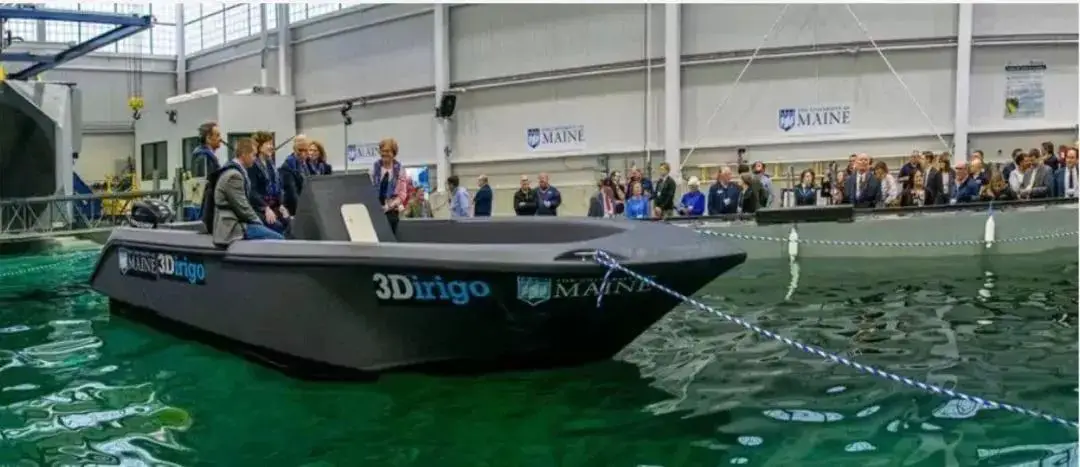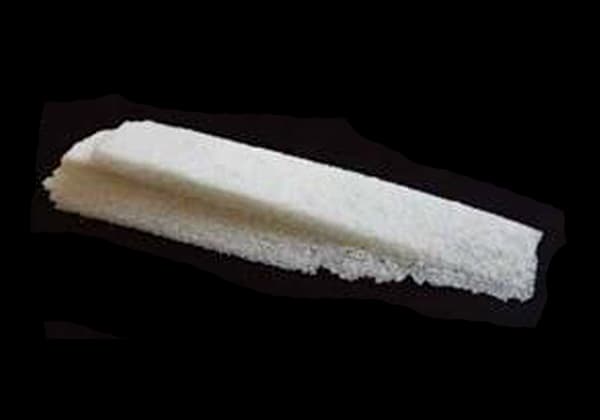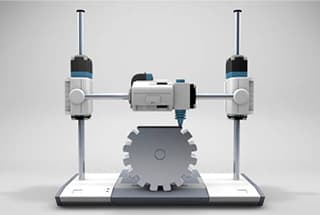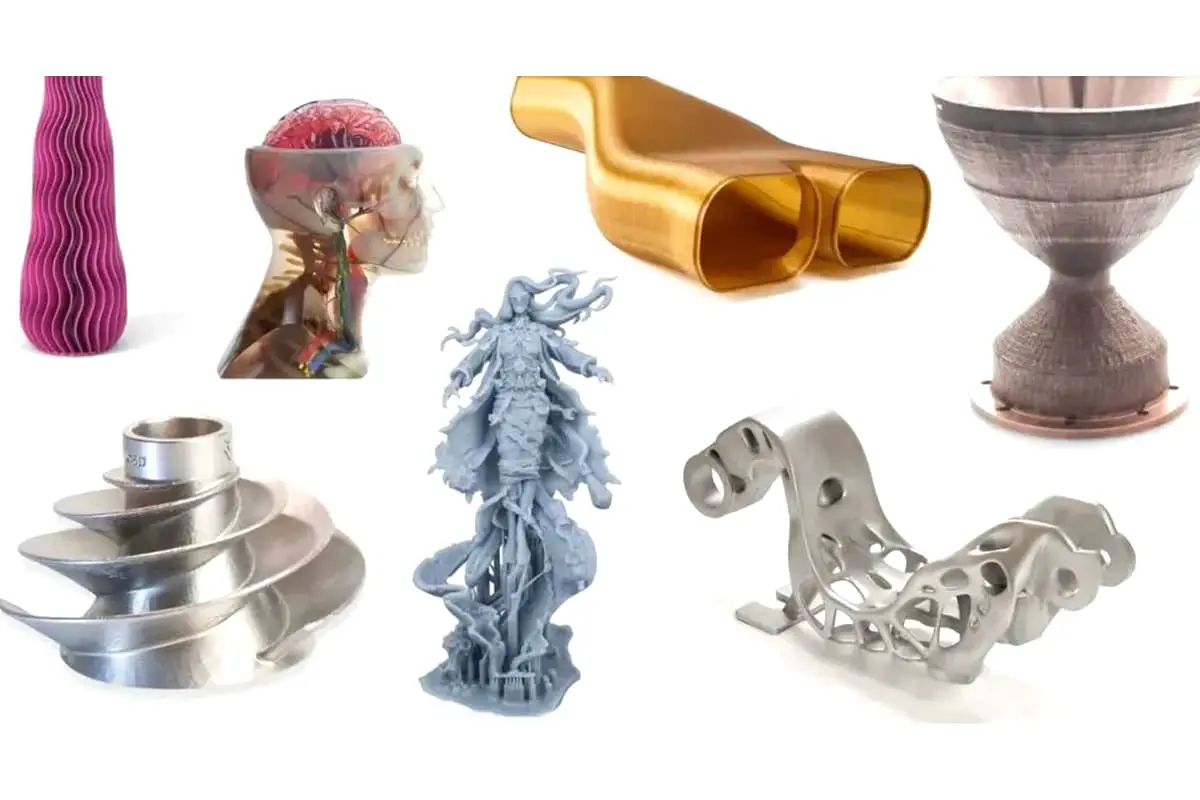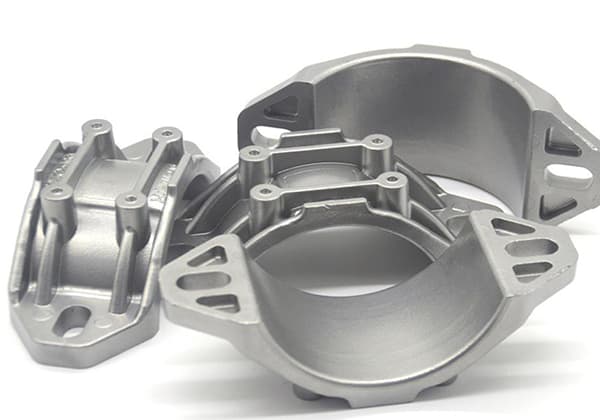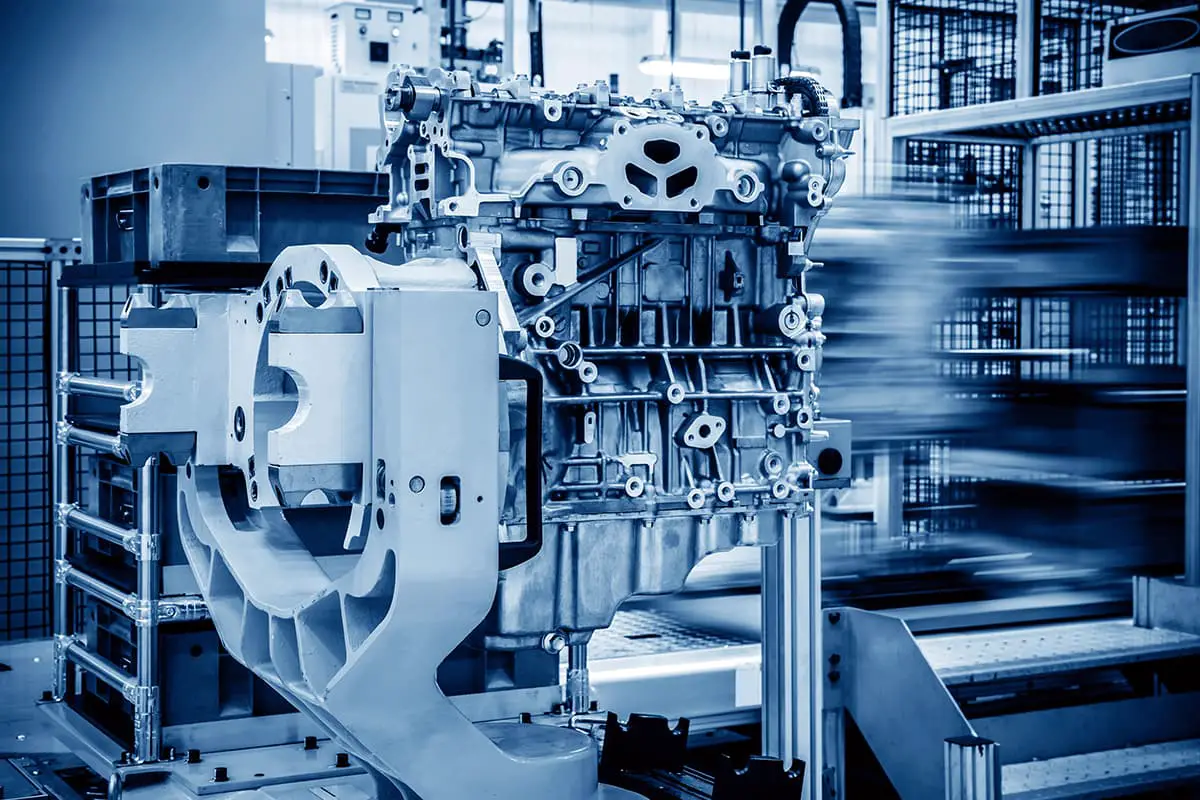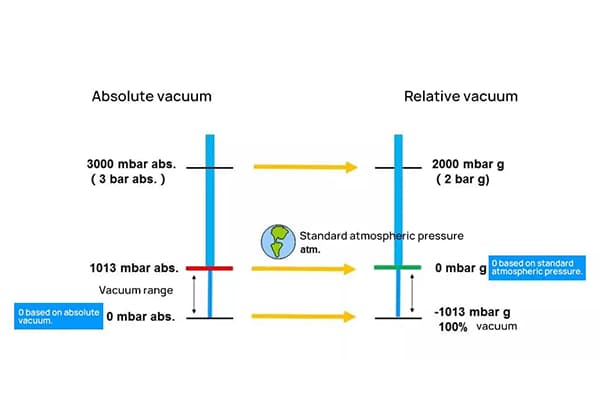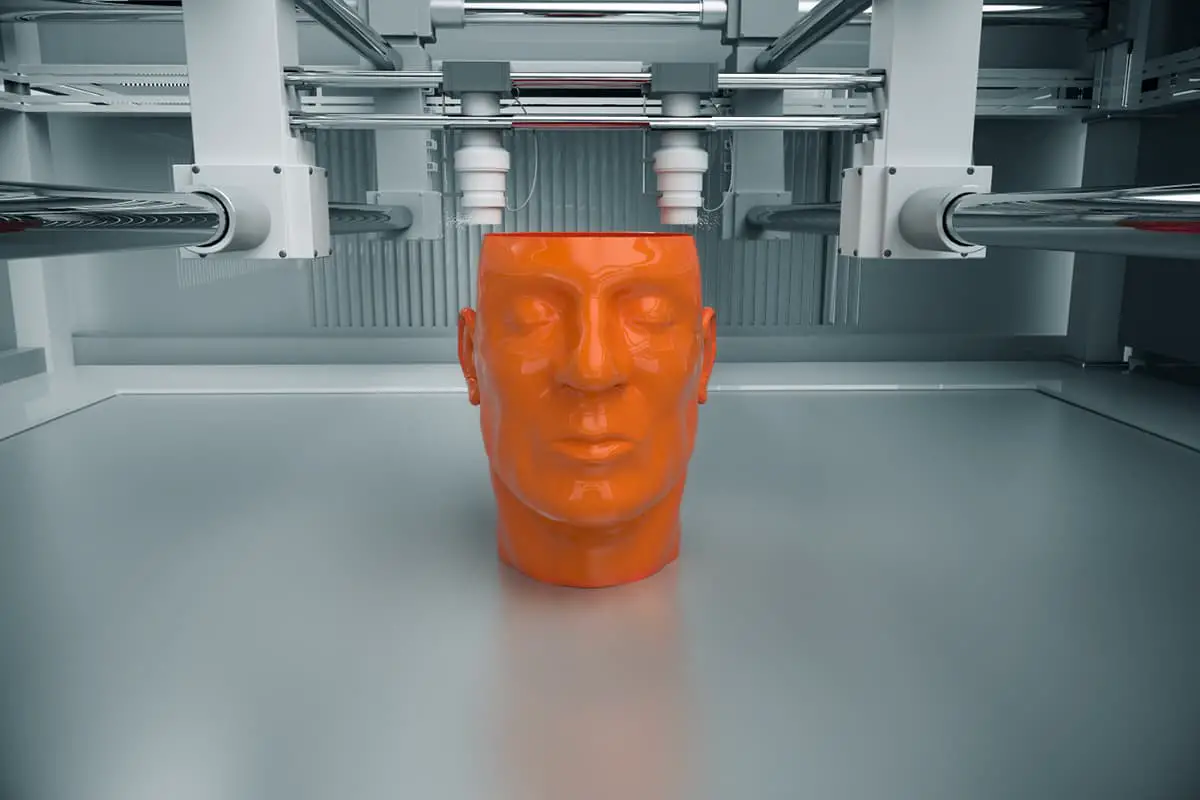
How can technology that builds up materials layer by layer revolutionize the defense industry? Additive manufacturing, or 3D printing, is reshaping military capabilities by enabling faster production of essential components, lighter and more durable materials, and innovative designs. This article explores 15 groundbreaking applications of 3D printing in defense, from building runways and tools to creating advanced helmets and submarine hulls. Discover how this technology is enhancing efficiency, reducing costs, and meeting the critical needs of modern defense forces.
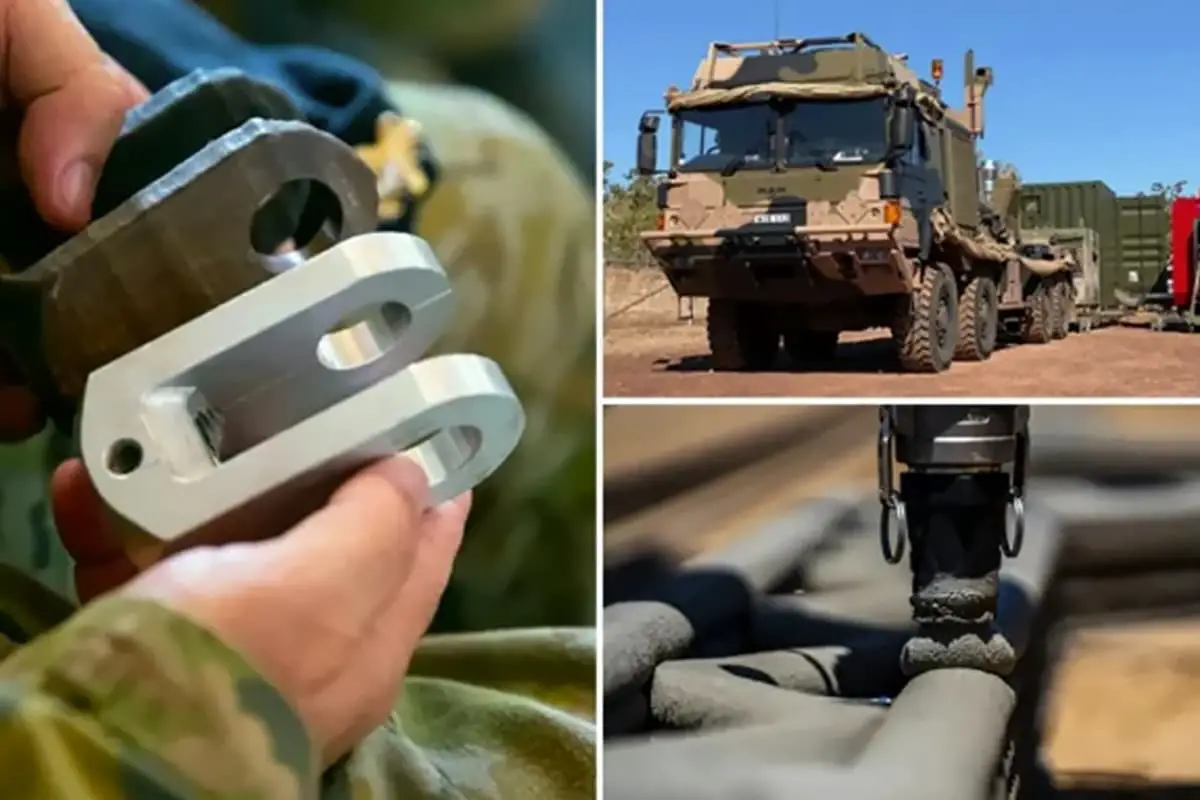
Additive manufacturing technology has long been recognized for its powerful capabilities and has been widely utilized across numerous sectors, including maritime, aerospace, and automotive.
Notably, it is increasingly adopted by defense departments around the globe. In fact, by 2027, the military 3D printing industry is projected to be worth $1.7 billion.
Given the military’s demand for faster speeds, lighter weights, and lower costs, the selection of additive manufacturing technology to achieve these features is undoubtedly the most appropriate choice.
This article lists some cases of 3D printing technology being used in the defense sectors of various countries. From these practical examples, we can further appreciate the significance of this technology in defense.

The U.S. military is fully convinced of the benefits of additive manufacturing. In 2021, they announced plans to build the world’s largest metal 3D printer. The DEVCOM Army Ground Vehicle Systems Center is constructing this colossal printer with the assistance of ASTRO America, Ingersoll Machine Tools, Siemens, and the MELD Manufacturing collaborative at the Rock Island Arsenal. This printer will become part of the Seamless Hull project, with the ultimate goal of printing an integrated hull for combat vehicles.
It is reported that the project will take approximately 14 months to complete. Upon completion, the printer will be capable of printing metal parts that are 30 feet long, 20 feet wide, and 12 feet high (approximately 9 meters by 6 meters by 3.6 meters).
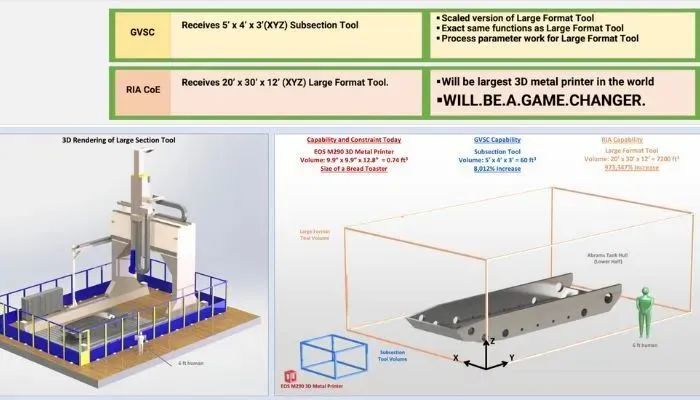
Another application in the military and defense sector comes from ITAMCO (Indiana Technology and Manufacturing Companies), which is using additive manufacturing to develop a runway for military expeditionary airfields. These runway mats are pivotal components of Expeditionary Airfields (EAFs).
Their purpose is to be put into action on weaker grounds, allowing military aircraft to land and take off. Previously, portable runways made from aluminum sheets were used, but as these became obsolete, the military needed to find an innovative solution.
The German company EOS’s M290 3D printer was employed to manufacture lighter, more durable models for the US Air Force’s military equipment.
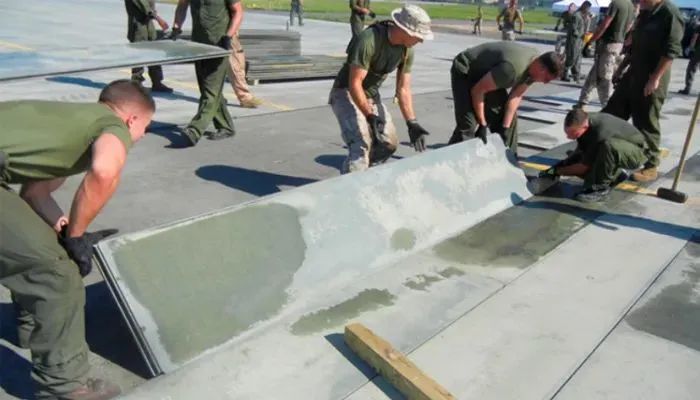
In a bid to expedite the development of robust 3D printed factory canisters, ExOne has engaged in this endeavor following collaborations with multiple partners. Specifically, it involves a $1.6 million contract with the Defense Logistics Agency (DLA).
Throughout this process, ExOne’s Binderjet technology, renowned for its speed, material flexibility, and ease of operation, has been employed for military purposes, effectively addressing the critical needs of the military.
This 3D printer, designed specifically for the military, is said to be capable of jetting adhesive, dispensing over 20 types of metals, ceramics, and other powdered materials. Moreover, its unique casing and other features reportedly make it exceptionally suitable for military-grade products.
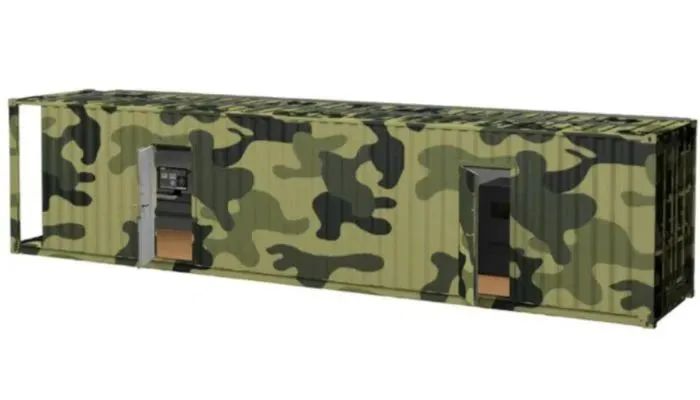
The U.S. Navy is also harnessing the power of additive manufacturing. Their Marine Corps has discovered the potential of 3D printing in developing new vehicle maintenance tools.
In collaboration with supply camps and industry partners, the Marine Corps Systems Command has produced an additive manufacturing clamp through 3D printing technology. This clamp is designed for detaching steering wheels from metals – a common issue in naval vehicle maintenance.
Additive manufacturing aids in reducing maintenance and tool preparation time, successfully decreasing the actual waiting time for such parts to about 25 days.
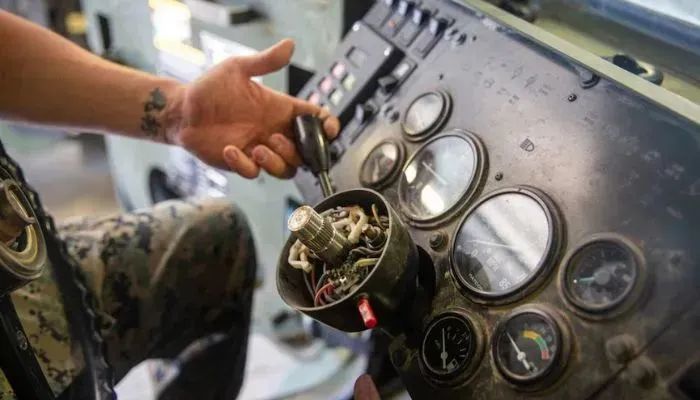
In the realm of 3D printing technology, the U.S. Army regularly collaborates not only with relevant corporations, but also with various universities. Recently, scientists from the University of South Florida have successfully 3D printed a magnesium alloy known as WE43.
The development of this material was not serendipitous, but rather driven by military needs. U.S. soldiers often find themselves burdened with extremely heavy packs and equipment, so research aimed at reducing their load is of paramount importance.
However, with the assistance of WE43 and the powder bed fusion process, the U.S. Army and the University of South Florida may have discovered a solution.
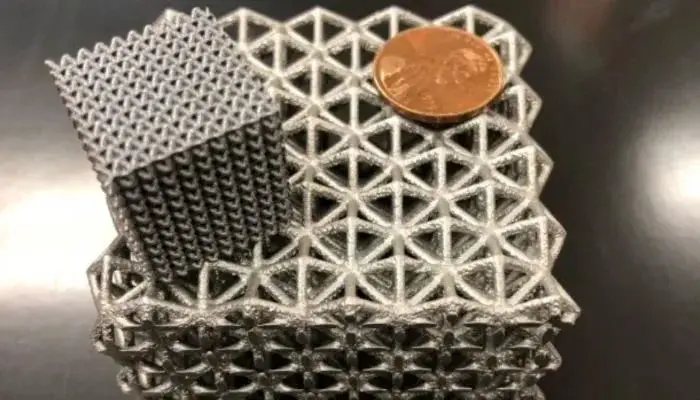
In recent years, the renowned French company, Naval Group, has been employing 3D printing technology to satisfy a variety of needs. As of January 2021, thanks to the Wire Arc Additive Manufacturing (WAAM) process, Naval Group has successfully 3D printed a propeller.
Composed of five blades, each weighing 200 kg, the propeller was then installed on the Perseus, a minesweeper ship. The team behind this project revealed that by using 3D printing technology, they significantly cut down construction time and minimized the amount of material used.
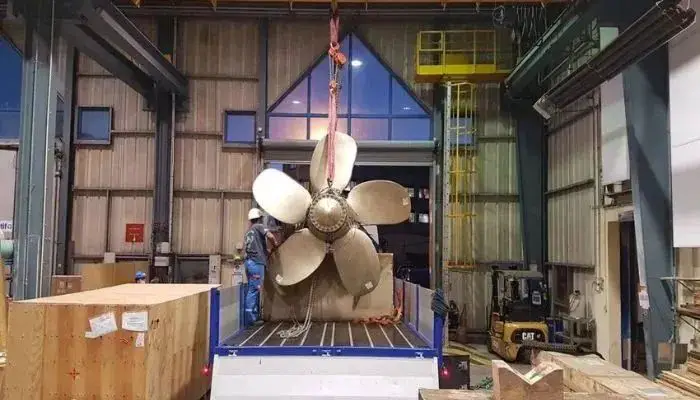
Additive manufacturing can assist parts in achieving high hardness, strength, and other exceptional attributes. Through internal fiber reinforcement, researchers have developed a variety of tools and end parts that can withstand the stringent performance conditions required in situations of great stress on parts, without any margin for error.
In Madrid, the head of the Spanish Air Force’s helicopter workshop stated they are now attempting to manufacture each part through additive manufacturing, avoiding traditional production methods. These parts include leak control measurement tools for helicopter landing gears and custom keys for helicopter main rotors.
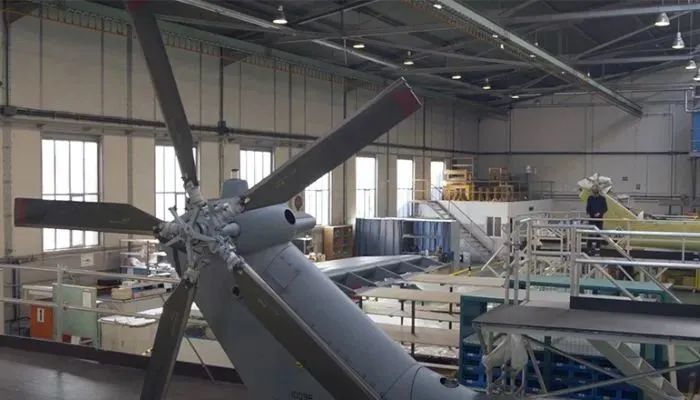
General Lattice, a 3D design software company, has inked a contract with the U.S. Army to enhance the impact absorption capabilities of combat helmets through 3D printing and advanced lattice geometries. For this project, the firm has devised a set of predictive modeling tools to design and generate helmet materials.
To bolster the protection of soldiers on the battlefield and increase their survival likelihood following head impacts, the 3D printed materials will be tested in real-world conditions to validate performance requirements set by the Command Soldier Center.
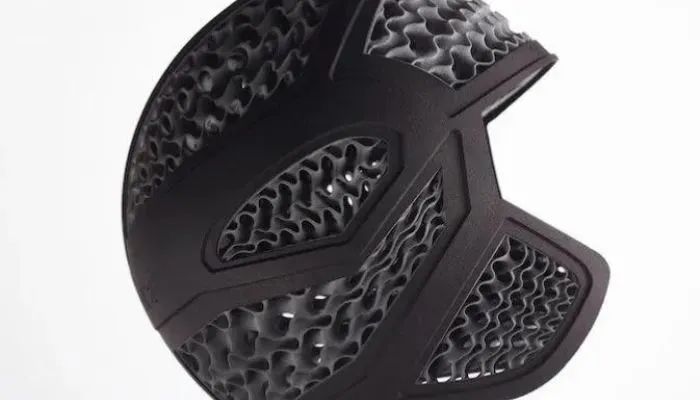
The Australian Army has designed dozens of spare parts for one of its armored vehicles using a cold spray 3D printing solution developed by SPEE3D. These components have passed multiple field use tests and certifications, enhancing the agility of the Australian Army.
For instance, the printed parts include a wheel cover produced in just 29 minutes, with a total cost of 100 Australian dollars. By introducing additive manufacturing technology, the military is able to reduce downtime of armored vehicles, thus dealing more effectively with emergencies.
For several years, the U.S. Navy has been undertaking numerous additive manufacturing projects. The objective is to enhance the agility and efficiency of teams performing missions in the open ocean, particularly in terms of manufacturing spare parts. This is why the Naval Postgraduate School (NPS) has invested in the Xerox ElemX metal machine.
They use this equipment to design spare parts and tools for submarines and ships, allowing Xerox to have a shorter supply chain and manufacture customized components. However, NPS isn’t the only organization launching 3D printing initiatives in the maritime sector.
Indeed, MatterHackers has signed a five-year contract with the U.S. Navy to supply all required 3D equipment, along with training courses and maintenance.
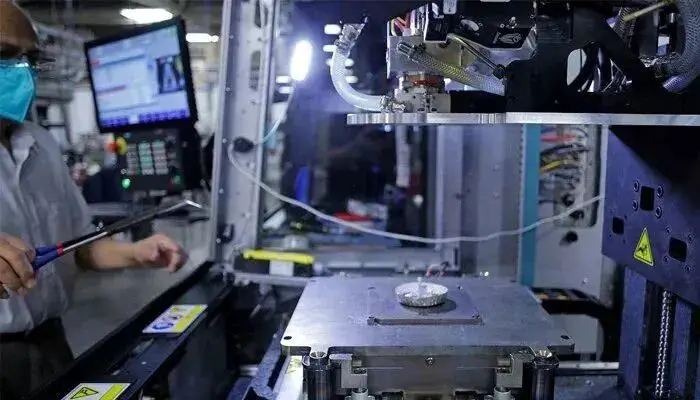
The Future Energy Project from the UK is engaged in research, explosive testing, novel energetics manufacturing, explosive modeling, chemical synthesis, thermal characterization, and hazard testing.
The project aims to create new energetic materials and diagnostic methods to verify these novel materials. Additive manufacturing will be employed to develop new explosive formulations, offering numerous advantages to potential users, such as reducing storage and transportation costs and enhancing performance.
The costs can be precisely tailored according to the requirements and manufactured in innovative, complex designs, a concept previously unimaginable. The manufacturing process utilizes the LabRAM Resonant Acoustic Mixer, which uses acoustic energy instead of physical blades to mix the materials, making the process safer.

The applied science and technology research organization, also known as ASTRO America, has been selected by the U.S. Army for the seamless hull project.
Supported by the Manufacturing Innovation Institutes, which benefits from the U.S. Department of Defense, this plan is part of an effort to develop and deliver armored vehicle hulls using 3D printing.
They aim to reduce manufacturing time and lower production costs, while lightening the weight of the vehicles and enhancing their performance and survivability.
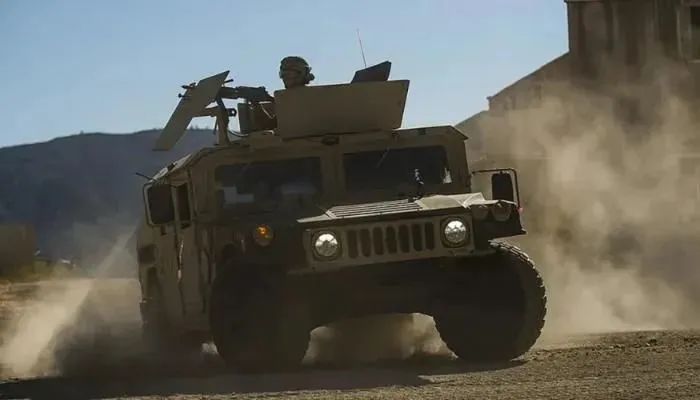
ICON, a 3D construction company renowned for its involvement in military projects, collaborated with the Texas Military Department, Logan Architecture, and Fort Structures to create the largest 3D printed structure in North America.
The training camp, located at the Swifte Camp Training Center in Bastrop, Texas, was built using ICON’s Vulcan construction system—a robot printer operated via a tablet, capable of using cement-based materials.
This successful partnership between the company and the military resulted in the first 3D printed military barracks for soldiers to reside in. The final structure consists of a 3,800-square-foot building, capable of housing up to 72 soldiers or pilots, preparing them for their next assignments.

For years, the Department of Defense has found ways to apply 3D printing across various domains—on land, in the air, and at sea. In fact, one of the latest projects of the U.S. military delves into a relatively uncharted territory of 3D printing: underwater.
In a pioneering endeavor in 2017, the Oak Ridge National Laboratory (ORNL) collaborated with the U.S. Navy’s Disruptive Technology Lab, resulting in the first-ever 3D printed submarine hull in military history.
Utilizing ORNL’s Fused Deposition Modeling Large Area Additive Manufacturing (FDM BAAM) technology, the team crafted a 30-foot conceptual hull composed of six carbon fiber composite sections, demonstrating faster production and lower costs compared to traditional manufacturing methods.
Despite still being under testing, indicators suggest that we will soon witness more 3D printed submarines diving into the oceans.
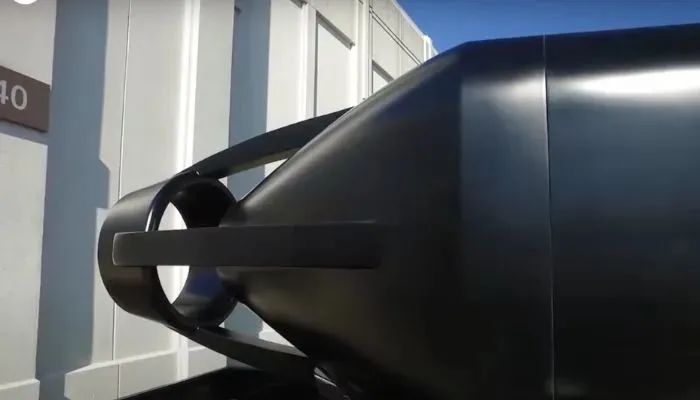
In March this year, the University of Maine (UMaine), at its Advanced Structures and Composites Center in Orono, 3D printed two large vessels, one of which is reportedly the largest additive-manufactured vessel in history.
These prototype vessels were developed for the U.S. Marine Corps, designed as logistical support ships, and will undergo testing for active military use. The larger of the two can accommodate two 20-foot shipping containers, while the other can transport three days’ worth of food, water, and other supplies for an entire rifle squad.
Both new vessels were 3D printed from a multi-material blend based on polymer fiber-reinforced composites. According to UMaine, they were able to manufacture and assemble one of these vessels in just a month – a process that would take up to a year using traditional manufacturing methods.
